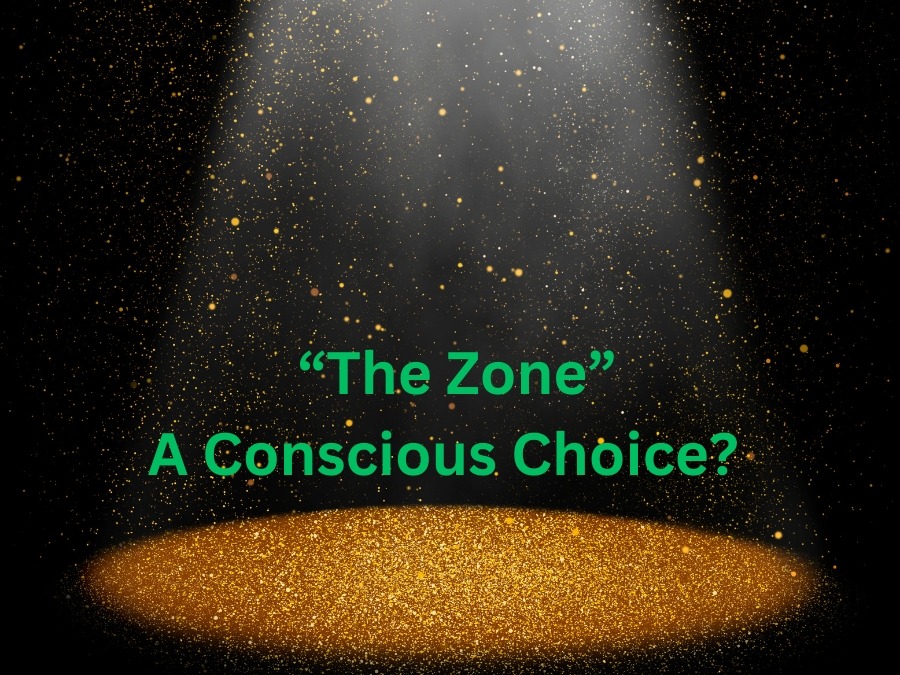"The Zone" - A Conscious Choice?
“The Zone”...! What is it, how do we get there and what has it got to do with singing and Qi gong?
Darren Clarke
5/23/20233 min read


“The Zone”...! What is it, how do we get there and what has it got to do with singing and Qi gong?
There is still a lot of emphasis by many sports science commentators who describe being in the zone as “being in a mental state where you perform best.” In my opinion they’re right, but it’s not the holistic picture that I’d expect from athletes and coaches that on the whole are taking their bodies, their breath and their minds to extraordinary limits.
Of course the mental aspect is extremely important, especially if our mind becomes outcome- or result-driven in a performance, for example. Outcome-orientated thinking and outcome bias can lead to anxiety. We worry about the end result and because of that, all the niggles and diatribe that our minds come up with - e.g. what the audience think of us, what our colleagues think of us, making a mistake, concerns about a certain passage, low notes or high notes, etc. - can in turn initiate the engagement of counter productive muscle tensions and unhealthy breathing patterns.
It’s well established that healthy diaphragmatic breathing is clinically proven to reduce anxiety. And yet, early on in my Qi gong practise, I was regularly singing with what I incorrectly thought was healthy diaphragmatic breathing whilst still going through the anxieties I’ve mentioned above, just as many other singers that I’ve spoken to have or are still experiencing. So why after years of study do we (me and my fellow colleagues willing to admit it) feel that there’s only been a handful of times that we’ve been “in the zone”?
Is it perhaps something to do with the French philosopher Rene Descartes theory of dualism? Stay with me, it’s not random!
Cartesian dualism was a major influence in freeing medicine from church oversight. By separating the mind and body, religion focused on the incorporeal mind while medical science took charge of the physical body, studying physiology and anatomy. This separation has, in my view, spilled over into how teaching is sometimes still practiced today in Western based cultures.
Techniques that are taught with this mind/body dualism can be misunderstood semantically and become mind driven. The demand that the body must do this or that leads invariably to unnecessary tension. Most of us are visually centred, which means we tend to look down at our bodies. This can lead to illusory tendencies and the anxiety of “getting it right”, which is a symptom of the aforementioned result-driven bias.
Of course there is a pre-requisite of mentally learning the notes and/or the words, but simply put they are really only symbols meant to convey information and emotions. Research has shown that the interaction between perceived emotions and bodily sensations is bidirectional, i.e. a two-way street. Emotions can trigger changes in the body, and conversely changes in bodily states can influence emotional experiences.
This psychosomatic merge is a gateway into “the zone” or a “Flow State”, a term that was popularised by the positive psychologists Mihaly Csikszentmihalyi (ˈ͡tʃiːksɛntmihaːji or chick-sent-me-highy) and Jeanne Nakamura. As Csikszentmihalyi explained it, flow is “a state in which people are so involved in an activity that nothing else seems to matter; the experience is so enjoyable that people will continue to do it even at great cost, for the sheer sake of doing it.”
Isn’t that why humans began to sing, dance and make music in the first place? For sheer joy, for ceremony or for therapy? If music and singing in particular are to enhance our lives and the lives of others then technique should serve expression and to do that I would say we need to look at teaching methods that are causal, i.e. that enable the coordination of body, mind and spirit (however you wish to interpret it).
Along with other Eastern arts, Qi gong has been cultivating mind, body, breath and spirit for thousands of years and yet here in the West we don’t see a major movement towards this until the early 20th century with mind body pioneers that brought us the Alexander Technique, Feldenkrais Method and Carl Stough's work on breathing.
Qi gong works on a flow state on many levels from the flowing physical movements of silk reeling, different breathing techniques for specific exercises and energy flow through meridians, and fascia in standing meditations. With all of these our minds have to be present. We balance our intention with our attention to what our body is "doing" ("Wei" in Chinese) and through this, over time and practice, the mind, body and breath are amalgamated into a state of actively "not doing" ("Wu Wei") - aware yet unaware that we are in a "Flow State" or "The Zone"!
Continued in Part 2, coming soon:
"Striking the Balance: Attention and Intention in the Practice Paradox"